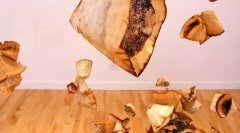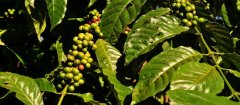Egyptian beans are named according to origin, coffee beans are classified according to grades, raw beans, coffee beans.
Egyptian beans are named after places of origin and are usually named after provinces. This is a bit like the Bordeaux region of French red wine. Which producing areas are clear to everyone. Note: Chevy is a small producing area in Sidamo Province. Because of its unique flavor, it can become an independent brand. This naming method is very different from other African countries (including the hierarchical naming introduced below). We often see descriptions such as: Yejia Sheffield Grade-2, Harald Grade-3, etc., in fact, these Grade-2,Grade-3 do not fully represent the level of quality. What does that mean? As follows:
Washing: Grade-1;Grade-2
Sun: Grade-3;Grade-4;Grade-5 and Grade-1
[remarks]:
A) Gr-1 is available both in washing and in the sun, provided that there is a "zero" defect and Premium Cup. Whether it's washing or tanning, Gr-1 rates the boutique of the boutique or Cup of Excellence coffee.
B) the lowest level of sun-tanned Sheffield and Sidamo is Gr-4, unlike Gemma with Gr-5. But if sunny snow is the general Egyptian export of gr-4, it will be exported under the name of Sidamo gr-4 (the reason may break the reputation of Shifei).
C) beans of the same level, such as Lim gr-2, are both good and bad.
D) for the requirement of "zero" defect, gr-1 beans (including those washed in water or in the sun) are extremely rare because of the high cost of processing and very few suppliers will do it.
F) there will certainly be no talk of sunburn or Sidamo or gr-2 II. Parchment Coffee (shell beans) grading system: first of all, it should be made clear that the following system is only for the grading of Parchment Coffee before auction, that is, during process 6), and the certificate issued is only used for auction and cannot be used as an export certificate.
General requirement: the moisture content of sun-cured coffee beans should not exceed 11.5% of the weight, and at least 85% of the beans should be kept above 14 mesh after screening. (that's why Egyptian beans don't look good: more than 14 eyes means 14Magi, 15je, 16je, 17jue, 18, etc. mixed together, beans must be uneven.)
The grading of Parchment Coffee: 1, 2, 3, 4, 5, 6, 7, 7, 9, UG (undergrade). This is completely different from what Shirley Grade-2, Harald Grade-3, this is a domestic grading logo, used for auction, not export grade naming. There are two major factors for evaluating the above grades: Raw Value (physical factor) accounts for 40 points, Cup Quality Value (cup factor) accounts for 60 points, and the total score is 100 points.
Physical factors include: shortcomings 20, shape 10, color 5, odor 5
Cup factors include: clarity 15, acidity 15, taste 15, flavor 15
Finally, it is graded according to the total score.
And to be rated as a boutique, there is another round of finals, that is, a second round of evaluation, which is rated as 1Magne2 and 3, and the evaluation is a cup test evaluation, and the evaluation factors are basically the same as those of SCAA.
[note]: all the above cups will be baked and tested after the shell of the sample is removed.
After the exporter auctions the beans back, process 9), in this step there is a mix, which has two meanings:
A) mix beans from different hills
B) mix beans of different Parchment coffee grades. The key part that affects quality is in b).
We have just introduced the grades of 1 to 9 Parchment UG. Let's take Sheffield as an example. Exporter A has an order for 20 tons of Shaffy Grade-2, which has been auctioned back from the auction house for more than 20 tons of Sheffield. In most cases, the goods he auctioned were sold in several batches, because a mountain would not happen to have as much coffee as 20 tons. The auction in several batches means that the small production area is different from the Parchment grade. For example, if it is taken in four batches, then these four batches will be
A production area 5 tons (grade: 1); 25%
B production area 2 tons (grade: 2); 10%
C production area 10 tons (grade: 3); 50%
D production area 3 tons (grade: 4), accounting for 15%
Then the Parchment coffee is taken to the processing plant to be processed into 20 tons of raw beans for export. Of course, export grade certification should be done before export, and the official certificate of Shifei Grade-2 will be issued.

Exporter B also had an order of 20 tons, and he came back from the auction house with 4 batches of parchment coffee:
E production area 1 ton (level: 1); 5%
F production area 1 ton (grade: 2); 5%
G production area 10 tons (grade: 3), accounting for 50%
H production area 8 tons (grade: 4), accounting for 40%
Similarly, B issues the certificate of Shaffy Grade-2 in the official organization.
Therefore, although they are all called Xuefei-G2, the quality of A goods is certainly better than that of B, and much better. Of course, it is not said that B is a profiteer, because the export price of B is lower than that of A. Every penny is worth a penny.
The above operations are also applied to other Egyptian beans, such as Sidamo, Gemma, Lachamdi and so on. Summary:
1) in addition to planting, the key factors affecting quality are process 4) and process 9)
2) process 9) it is very important that the goods well managed by the processing plant are good goods. For example, measures such as workers' regular rest can effectively improve the quality of picking beans.
3) for every penny, you can bargain as an importer, but process 9) this step is beyond the importer's control, and the exporter will not tell you how they mix. The importer can find an exporter who is serious about making coffee.
4) Egypt is divided into Parchment grade and export grade, the two are different but related.
5) the classification of Egyptian beans is the most systematic classification standard known in African countries.
Important Notice :
前街咖啡 FrontStreet Coffee has moved to new addredd:
FrontStreet Coffee Address: 315,Donghua East Road,GuangZhou
Tel:020 38364473
- Prev

Ethiopia's pre-auction process Coffee beans where to sell high-quality coffee with raw beans
Pre-auction process 1) farmers pick fresh coffee fruits; 2) farmers transport fresh fruits to rural cooperatives; 3) cooperatives sell fresh fruits to middlemen; 4) middlemen collect and transport fresh fruits to processing plants (washing or tanning process); 5) middlemen transport processed beans (with shell beans, Parchment Coffee) to auction houses to establish warehouses; 6) auction houses give official evaluation (
- Next

SASINI Manor KiAMBU Region Kenya Treatment around Mount Kenya
SASINI Manor is located in Kiambu area around Mountain Kenya, about 1800 meters above sea level. It has beautiful scenery, pleasant climate, sufficient light and excellent soil conditions. It belongs to fertile acid red soil, loose soil, deep soil layer and good drainage. PH value is between 5.5 and 6.5. [Origin] Kiambu [Manor] SASINI
Related
- Beginners will see the "Coffee pull flower" guide!
- What is the difference between ice blog purified milk and ordinary milk coffee?
- Why is the Philippines the largest producer of crops in Liberia?
- For coffee extraction, should the fine powder be retained?
- How does extracted espresso fill pressed powder? How much strength does it take to press the powder?
- How to make jasmine cold extract coffee? Is the jasmine + latte good?
- Will this little toy really make the coffee taste better? How does Lily Drip affect coffee extraction?
- Will the action of slapping the filter cup also affect coffee extraction?
- What's the difference between powder-to-water ratio and powder-to-liquid ratio?
- What is the Ethiopian local species? What does it have to do with Heirloom native species?

